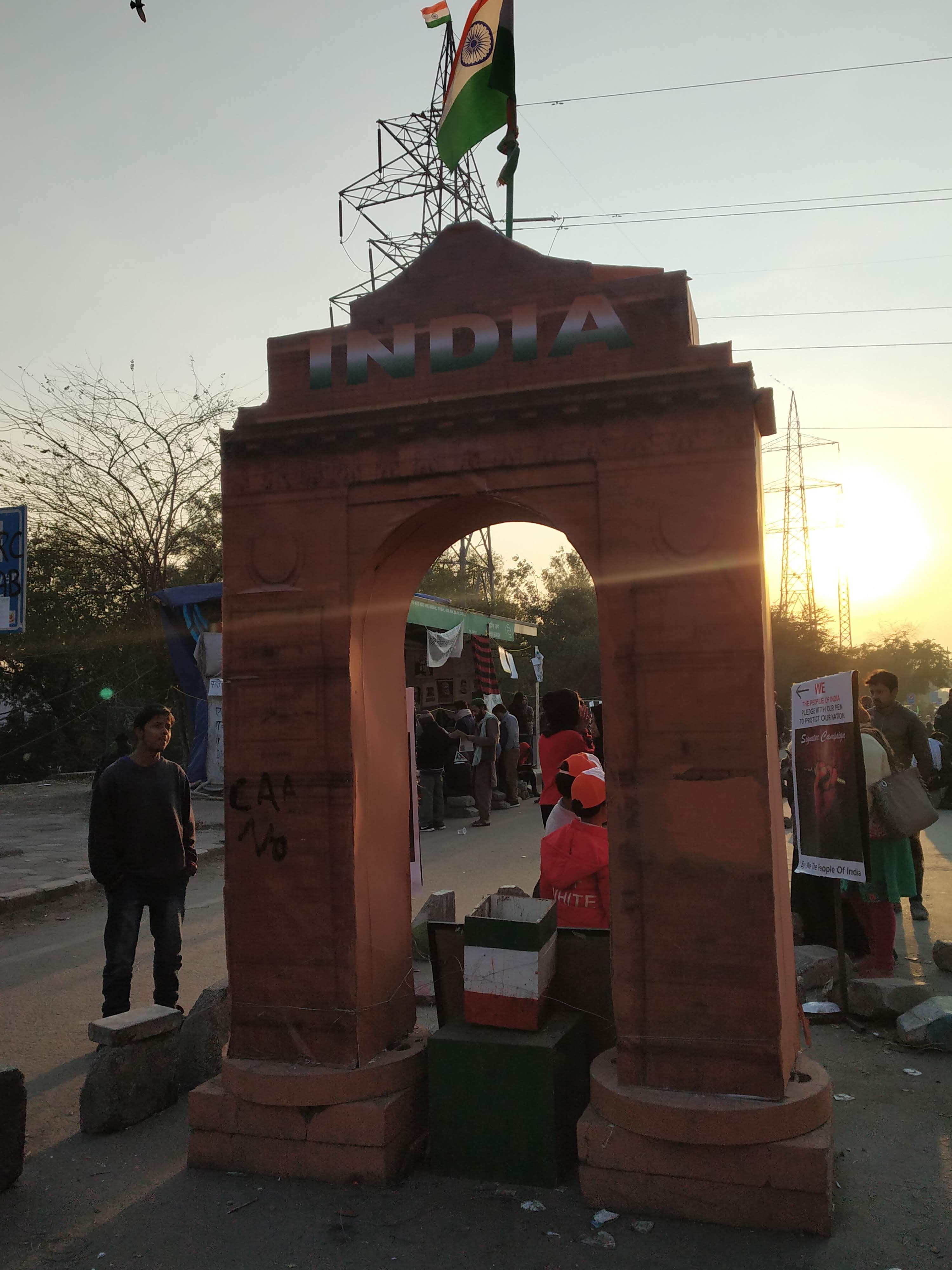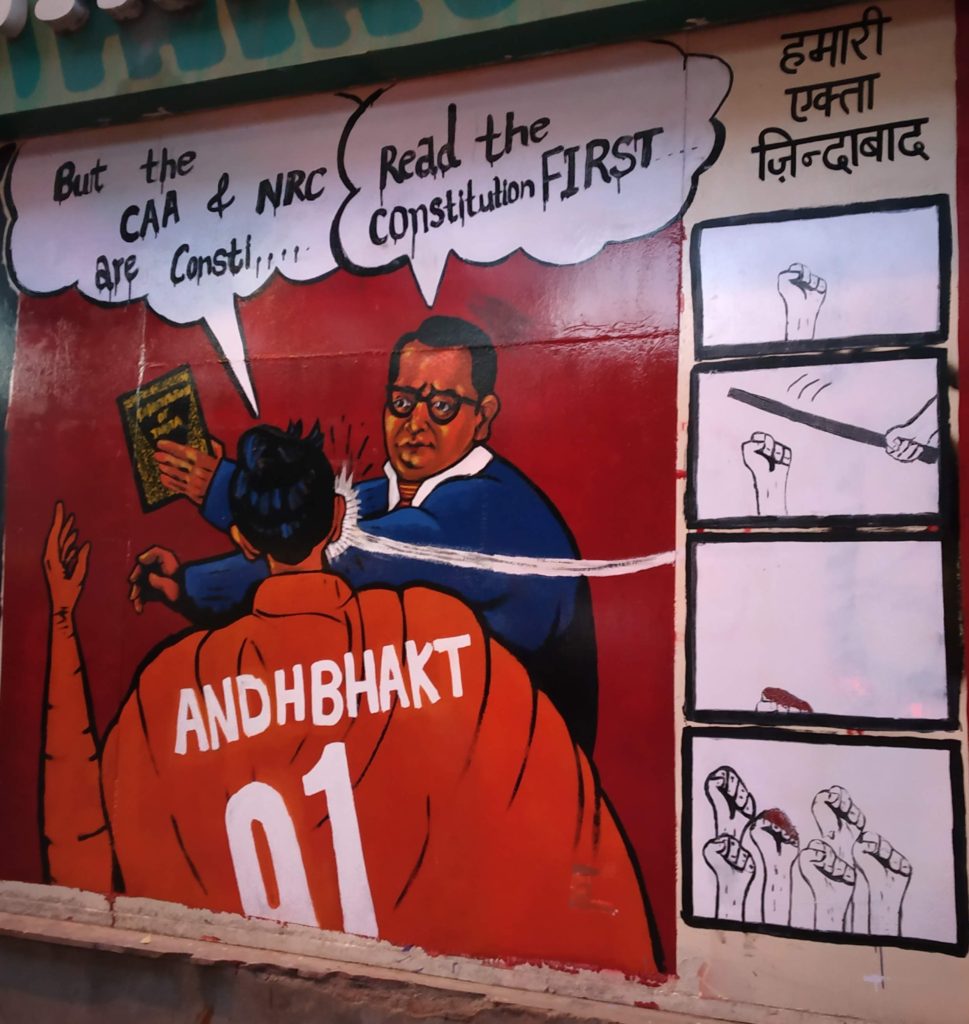















A 35 feet tall iron and mesh map of India was erected at Shaheen Bagh with the words – ‘We, the people of India, reject CAA-NPR-NRC’ inscribed on it. Visiting the Shaheen Bagh in January 2020, I recall people clicking selfies and photos with this art installation-cum-monument which had become the latest attraction centre of this major protest site in the city. The protest site of Shaheen Bagh emerged in response to the Citizenship Amendment Act (2019) after the brutal police attack on the students of Jamia Millia Islamia in December 2019. While both Jamia and Shaheen Bagh witnessed intense protests against CAA-NPR-NRC, it was the Shaheen Bagh protest that is often referred to as the moment which captured the “idea and imagination of India ”. The protest site transformed a local and spontaneous protest by a small group of neighbourhood women to a massive democratic and non-violent movement advocating equal citizenship and secularism across India with numerous Shaheen Baghs springing throughout Delhi and India.
While the anti-CAA protest and movement at Shaheen Bagh has been discussed for its massive mobilisation of (Muslim) women, non-political leadership, non-violent resistance, secular and constitutional ethos, it is interesting to look into the protest site in terms of understanding the shifting of social, cultural and political spatiality and public memory of the city and its inhabitants. With this protest, Shaheen Bagh, a lesser-known predominantly Muslim ghetto was reconfigured and remodelled into a remarkable and “monumental” site with hundreds of women along with men and children from the locality occupying the long stretched highway in Delhi for more than 100 days. From women, children, local inhabitants and students, to artists and filmmakers joining the sites of protest – Shaheen Bagh became more than a protest site; from a street, sit-in, metro station, neighbourhood to a library, art exhibition, performance space, women’s space and thus transitioning into a monumental site.
This historic protest and movement also need to be looked upon for their artistic and creative aspects. The sit-in of women and children were complemented with public art in the form of posters, photographs, paintings, wall art, graffiti as well as art installations with the movement contributing towards the history of the public art movement of Independent India.
Interestingly, most of the artwork at the protest site has been a collaborative effort of professional artists and the local community: posters, photographs and banners covering the foot-over bridge and numerous art-installations including the mini-model of India Gate made out of plywood, a replica of the original India Gate near the Parliament building within Central Delhi and other similar “monumental” installations. India Gate is seen as one of the monuments of national significance in Delhi; a pre-independence war memorial dedicated to the soldiers of the British Indian Army who lost their lives in World War I and after the 1971 Bangladesh Liberation War. In independent India, It was transformed into a martyrs’ memorial through “Amar Jawan Jyoti” (the Flame of the Immortal Soldiers). The public memory of the monument has also changed through decades, from being a monument of utmost national importance to becoming a site for the expression of dissent as a safe protest site in the capital.
The creation of a representational model of India Gate at Shaheen Bagh is momentous for its evocation of the underlying meanings behind the establishment of the India Gate: at Shaheen Bagh, it is dedicated to individuals who were killed in the anti-CAA protests. Also, the model was installed through the collaborative effort of the artists and local protestors, this suggests bringing the monumental protest site of India Gate to Shaheen Bagh since protesting at the original India Gate would not have been feasible for the women (housewives, mothers, grandmothers, great grandmothers, and children).
Another art installation that gathered immense attention included the mock-detention camp set-up on the site which provides glimpses into the lives of individuals and families within the detention camps showing the anticipated horrors of NRC. And finally coming back to the 35 feet iron and mesh map of India, the art installation acts no less as a “monument” on this extraordinary protest site. Designed and curated by two visual artists from Delhi and Kolkata, the map emerges as an outcome of a collaboration between the artists and the local inhabitants of Shaheen Bagh who supported by contributing iron sheets, mesh and physical labour. The roads of Shaheen Bagh have been re-imagined as the “road to revolution” both metaphorically and literally.



Well-written blog post. I used to be checking constantly to this weblog & Im so inspired! Very useful information, especially the last few sentences. I really need such info. I used to be looking for this particular knowledge for a very long. Thankx & good luck.